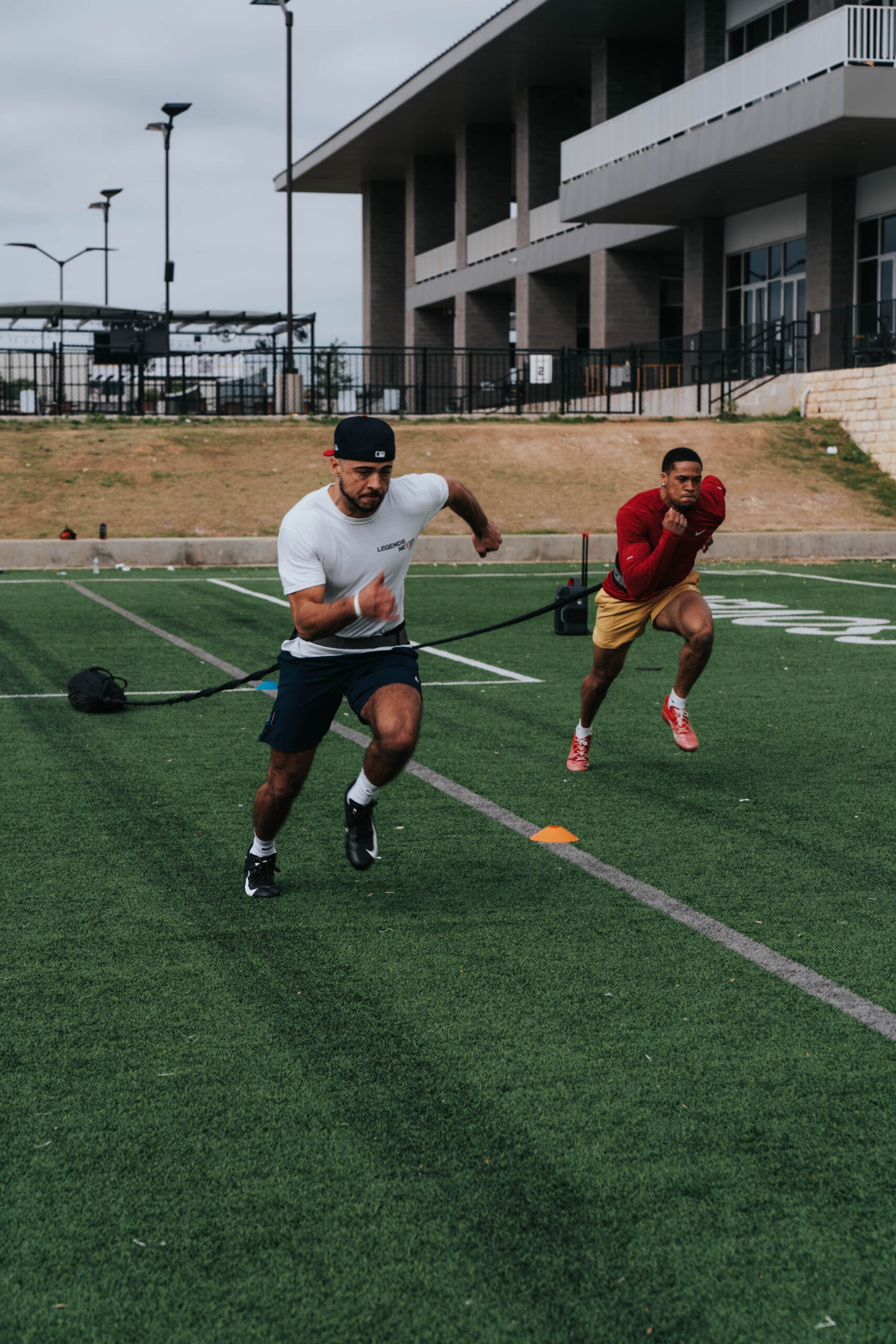Returning a tennis serve, rebounding a 3-pointer, stealing second base, and running a stick route all require knowing different angles when it comes to agility. Speed and agility training can help athletes to anticipate, accelerate, and react when it comes to making big plays.
Cross-training can help. While speed and agility coaches won’t make you commit to more than one sport, sessions that use multi-sport skills can be so helpful in improving an athlete’s coordination and footwork.
Build more than just muscles. Working on speed and agility and enhancing those specific skills can help an athlete to build confidence. Fueling physical performance with concentrated training exercises can give an athlete the mental toughness and power to take wise risks on the field.
Play it safe. Speed and agility training can help athletes to have a reduced risk of injury. Training can help athletes to fine tune the way they move; strong and controlled movements can mean that your joints and muscles have less stress on them.
It’s a good time. Make no mistake: the drills for speed and agility training are hard work. However, they’re also fun. Ladder drills, obstacle courses, cone mazes, and other creative speed and agility exercises can help athletes with spatial awareness and power.
Consistency is key. Showing up and giving your best effort to speed and agility training is essential. Growth and development happens over time, making you a faster, sharper, more confident athlete.
Work well with others. While a focus on speed and agility can be so beneficial, athletes can’t neglect all the other aspects of training that focus on the whole athlete. Fueling your body with proper nutrition, working with weights, and having good recovery strategies all can help an athlete to be more well-rounded and successful.
Find the right speed and agility trainer for you. At ROI, we place a focus on building high level athletes. Distinguishing qualities of athletes of this caliber include having great movement variability and considerable explosiveness. Movement variability means an athlete is capable of performing a variety of movements under different loads. When you’re training with ROI, once you’ve become an efficient mover, trainers begin to focus on sport-specific movements that are both powerful and explosive. This method of training helps to decrease the risk of injury.
ROI’s trainers in speed and agility are experts in the field. They work with athletes to select specific exercises with the purpose of creating a desired adaptation.
Learn about Functional Range Conditioning. If you’re training for speed and agility at ROI, chances are you’ll learn a bit about Functional Range Conditioning (FRC)—a comprehensive joint training system that helps to increase an athlete’s ability to control his or her body. FRC not only works to help an athlete gain better ranges of motion and mobility, it can also help to improve the brain’s control of the body in space. All of this work helps athletes to have longevity, to mitigate sports injuries, and to better perform in sports and daily living.
Contact ROI. At ROI, you can not only work on speed and agility training, but you can also dive into the world of balance training, During the fall football season of 2023, there was a lot of hype around Coach Deion Sanders and the culture he started creating at the University of Colorado. But, did you ever see Prime Time Neon Deion in his prime? His speed and agility on the field was legendary. While Sanders had some natural gifts, formal training surely helped him to sharpen his speed and agility skills. For athletes in all kinds of sports, meticulous technique coaching and consistent conditioning can help athletes to take their natural talent and capitalize on it in order to excel. Are you ready to take your talent to the next level with speed and agility training? Read on to learn more about how speed and agility training can help you to meet your goals.
The need for speed. Speed is a key component of speed and agility training. If you’re aiming to leave opponents in the proverbial dust, putting a focus on speed can help. Speed training builds an athlete’s raw power and velocity.
Quick and agile. Agility is all about having control over one’s body, doing quick changes of direction, and reacting fast on the field. Jukes, steals, tackles, and runs are just some of the athletic moves that can benefit from agility training.
Hit the ground running. During speed and agility training, athletes can practice explosive starts. Whether you’re coming off the line of scrimmage, running the bases, or taking the ball down the court, you want to explode with speed. Training can help athletes to use precise footwork, employ efficient running form, and to build better core and leg strength. All these things combined can help athletes to have that coveted explosive power.
Study the angles. lifting analysis, resistance training, and other sport specific training. Check out our programs online, or give us a call at 512-962-9141.

